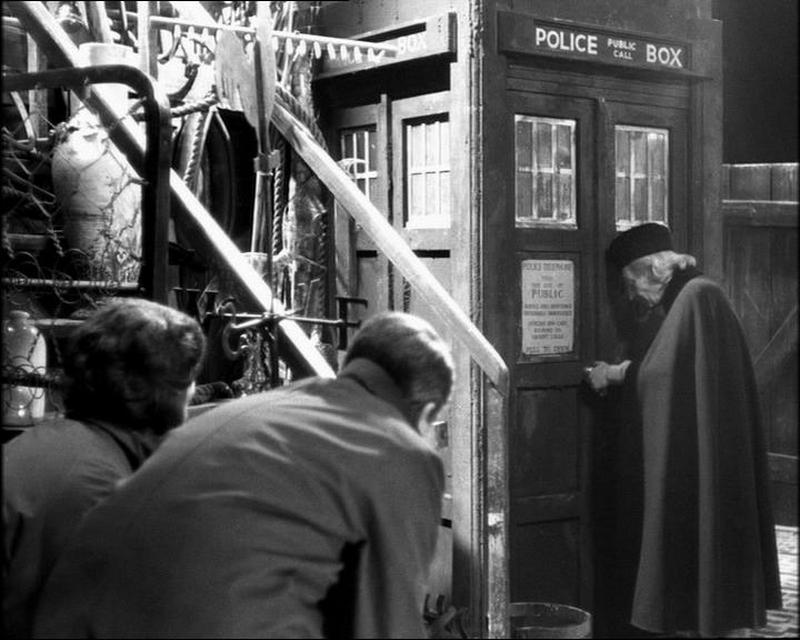Doctor Who’s First Incarnation
By | November 16, 2021


Beginning In The Stone Age
The premiere of the first episode was delayed by 80 seconds, and the network then rebroadcast the episode the next week, right before the second episode because they believed the public had missed the start of this new show. The first serial of the show, An Unearthly Child, was comprised of four parts and ran until December 14. In the first episode of this serial, the two schoolteachers, Barbara Wright (Jacqueline Hill) and Ian Chesterton (William Russell) discover the TARDIS in a junkyard in London. The episodes which followed it are set in the Stone Age, where factions who have lost the secret to making fire, are trapped in a power struggle.

Doctor Who Wasn't Always A Time Lord
While the early episodes went from being centered on history to being more science-fiction oriented, other significant changes were happening as the show evolved. By the end of the ‘60s, the Doctor, who had started as a slightly sinister character transformed to become more compassionate. He also got his identity as a “Time Lord,” which is an ancient alien species that can travel through time although he wasn’t called that initially. The term “Time Lord” was first used in “The War Games,” an episode from the sixth season. His backstory was also revealed; he had fled his planet, Gallifrey, which was finally named in 1973. His vehicle of choice: the stolen TARDIS (Time and Relative Dimension in Space). On the inside, the TARDIS is a deceptively large machine, but it appears small on the outside, and can hide in plain sight because of its “chameleon circuit.” With the use of this circuit, it can disguise itself to fit in with the rest of the environment. In Dr. Who, the circuit malfunctioned, and the TARDIS got stuck as a British police box, although it can still travel. In his travels through space and time in the TARDIS, Doctor Who fights evil forces who want to harm innocent people or who may change history. He is armed only with his own ingenuity and limited resources like the sonic screwdriver.

The Doctor Gains The Ability To Regenerate
William Hartnell played the first Doctor Who, a character who may or may not have been a real doctor; Dr. Who never clarifies this. Hartnell developed health problems towards the end of his three-year run, and so the showrunners created a new part of the Doctor’s mythology: the ability to regenerate, although the term was not used until Doctor Who’s third regeneration. When Patrick Troughton stepped into the role as the second Doctor Who, it was described as a “renewal,” and when Jon Pertwee became the third Doctor, the character had a “change of appearance.” In 1983, the idea that Time Lords can only have a total of 13 incarnations was established; this posed a problem when they needed to regenerate the Doctor a thirteenth time. To remedy this, in the 2013 Christmas special, “The Time of the Doctor,” Doctor Who acquired a new cycle of regenerations because the Eleventh Doctor was the product of the Doctor’s twelfth regeneration. In 2018, they introduced the Thirteenth Doctor, Jodie Whitaker, the first female in the role.

A Little Help From His Companions
From the beginning of the show, the Doctor has had companion figures who were typically human, and who often reminded the Doctor of his moral obligation. They also help to provide the audience with information about the Doctor. Only once in the original series did he travel alone: in 1976’s The Deadly Assassin. And, of course, any good hero needs villains to defeat.

A Hero Needs At Least One Villain
The Daleks, the villains who have been around the longest on the show, were not introduced until the second serial of the show, which started on December 21, 1963. The Daleks, which resemble octopuses, were mutated by the scientist Davros, and are housed in armor shells which have one eye stalk, a device like a plunger that functions as a hand, and a directed energy weapon. Their purpose is to “exterminate” anyone who is not a Dalek. Their weakness is their eyestalk, and if it is attacked, they are blinded and go mad. Terry Nation, the creator of the Daleks, intended them to be an allegory for the Nazis, and Raymond Cusick designed them, under specific directions from one of the shows’ creators, Sydney Newman. Newman did not want the Daleks to be bug-eyed monsters. Incidentally, the Daleks were operated by people inside of the two-part device. Other villains include Davros who created the Daleks, the Cybermen (who appeared a few years later), and the renegade Time Lord, the Master.

Coming To A Temporary End
In 1989, the first incarnation of Doctor Who was canceled. It had made it through multiple Doctor Whos, the switch to color television and other challenges, but with declining viewership, it was canceled. However, the show had an enthusiastic fanbase, and it returned, maintaining the original storyline to keep original viewers while updating it to attract new fans.
